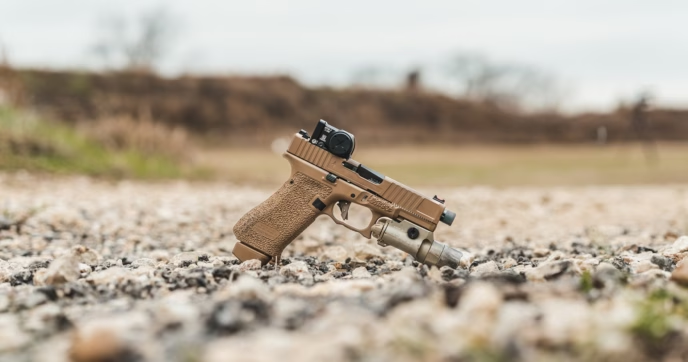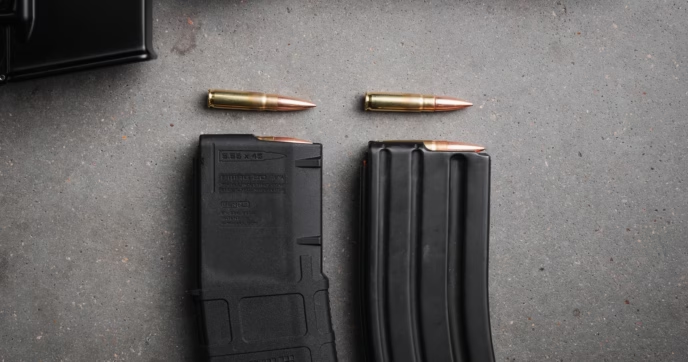Sighting in a rifle with a modern optic is usually a piece of cake. You fire a few groups, spin the adjustment knobs with your fingers, or at worst a coin or brass casing, and you’re good to go.
Zeroing iron sights, on the other hand, can be a bit more involved. But your sights are only as good as your zero, so it’s still important to make sure it’s set correctly. Whether you’re using iron sights as a primary aiming system or just zeroing your backups, we’ll walk you through how to do it frustration-free.
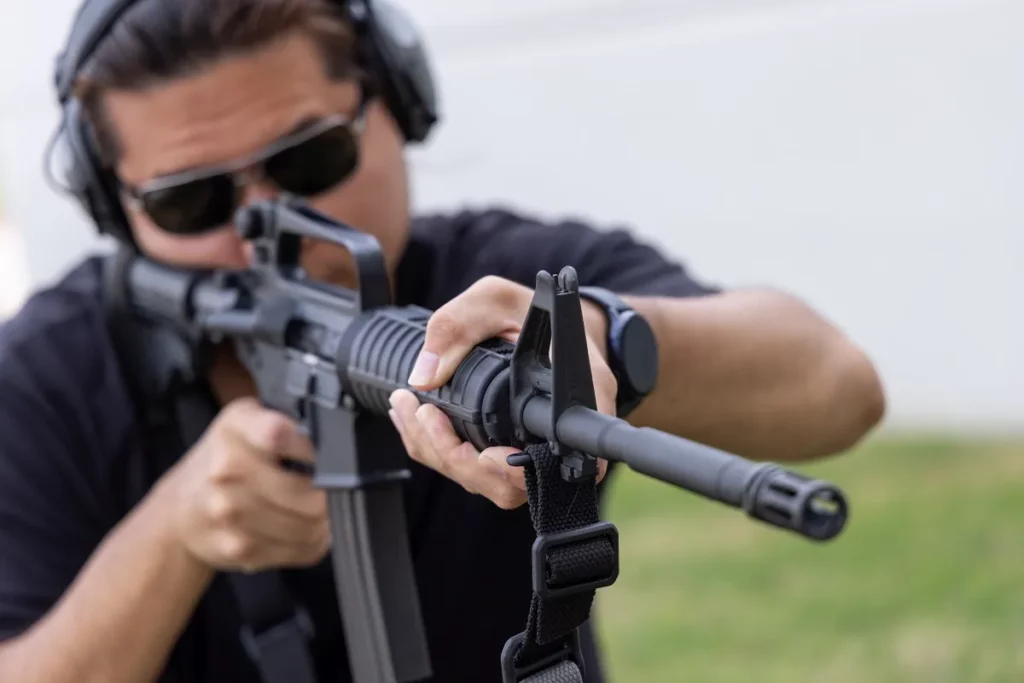
Before Starting
Before you get into the process of actually zeroing your rifle, there’s a bit of prep work to do first. You’ll need to choose your ammunition, determine your optimal zero distance, and gather any necessary tools.
Choosing the right ammunition is important because different bullet weights, manufacturers, and cartridge specs will lead to different points of impact. You can only be truly zeroed for one at a time, so you should do this zeroing exercise with the ammunition you want to be most accurate to your point of aim.
Your optimal zero distance will depend primarily on your rifle, caliber, barrel length, and optic. You may see zero distance written as two numbers separated by a slash, such as 50/200. This denotation refers to the fact that the bullet will impact the point of aim at two different distances Other times, it may be written as a simple number, such as a 100-yard zero.
While there are too many variables for us to recommend a zero distance here, you’ll want to do a bit of research and determine at what distance you want to zero your sights before arriving at the range. For iron sights, 50/200-yard and 25/300-yard zero distances are common options for sighting in an AR-15 rifle.
Lastly, you’ll need to gather any required tools for the process. These will vary from person to person; we heavily recommend that everyone use a gun rest or sandbags to achieve a more stable firing position for this, but some users prefer to zero their sights offhand.
You’ll also want to take the sights themselves into account. Many AR-15 and AK-style iron sights require a specific tool to adjust. Certain rifles may need a screwdriver or set of punches to adjust their sights. In some cases, such as Magpul’s MBUS Pro iron sights, you may not need any tools at all.
We also recommend binoculars or a spotting scope if you’re going to be zeroing at a distance longer than 25 yards. While there’s nothing wrong with walking down and checking your target after each group, they do make the process faster and more convenient.
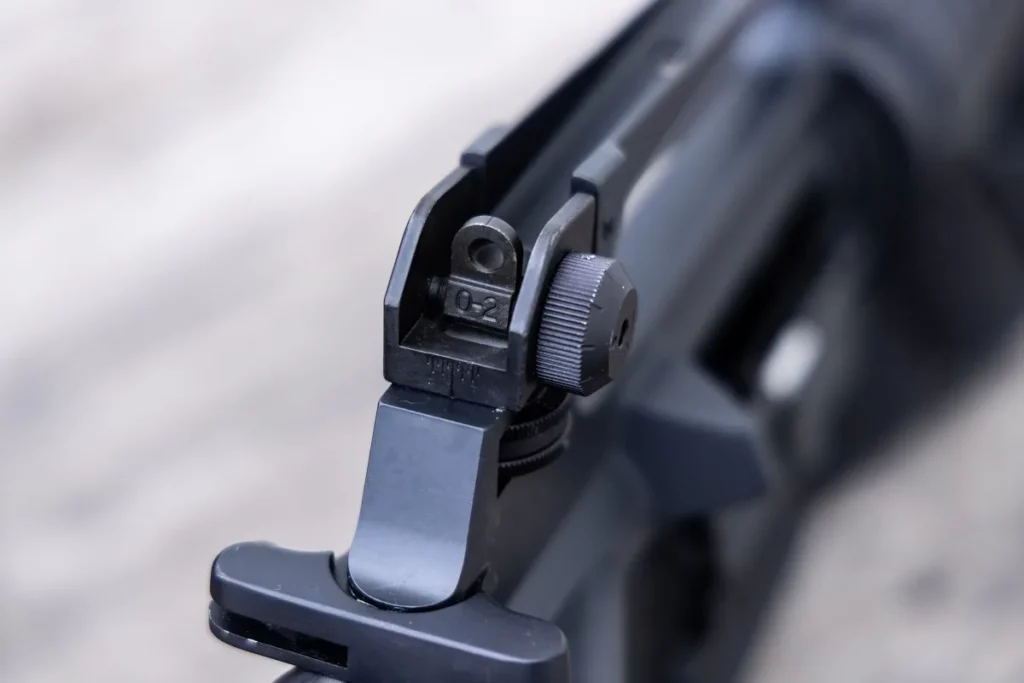
Setting Up Your Rifle
Once you’ve gathered your tools and you’re at the rifle range, you’ll want to get your rifle set up properly. If you’ve opted for a gun rest or sandbags, set them up and situate your rifle pointed downrange at the target.
Speaking of the target, you’ll want to use an appropriate one for zeroing your sights. Zombies and shooting galleries can be fun for target shooting, but a plain grid-style target with bold lines will make this process easier, especially if the lines demark round measurements like inches.
If you brought a spotting scope, set that up in a convenient position so that you can check it without leaving your seat at the firing bench, if possible. For binoculars, just set them somewhere within reach, but out of the way while you’re firing. Any tools you need to adjust your sights should be similarly located.
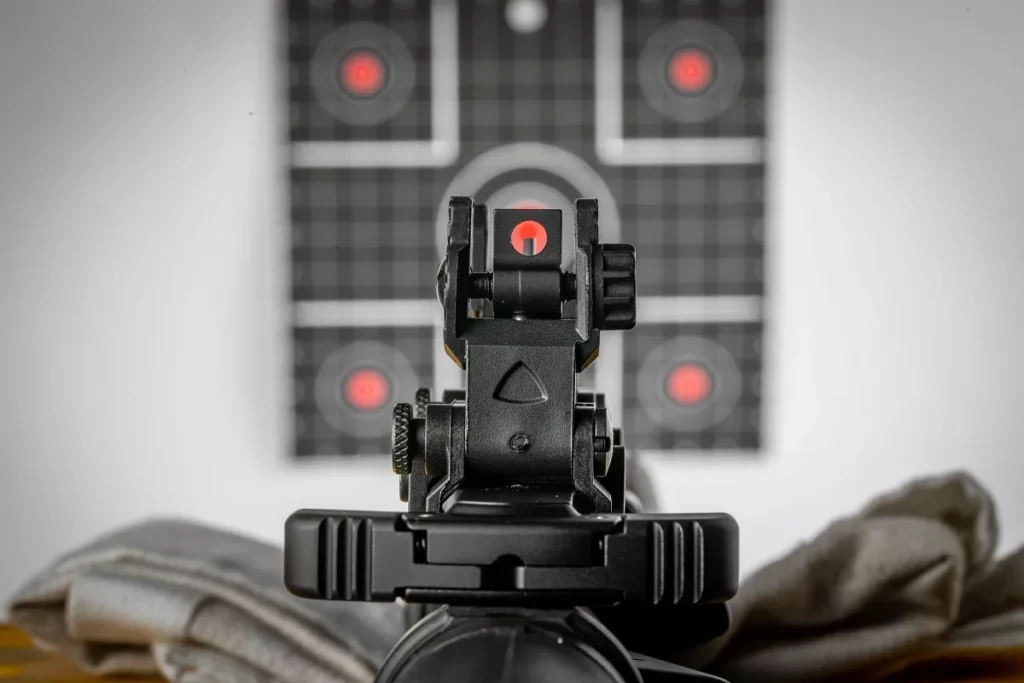
Boresighting
Ammunition is expensive, and so to minimize the cost of the zeroing process, we recommend boresighting before you start sending rounds downrange. This process will help roughly align your point of aim and point of impact, making the zeroing process quicker and cheaper when you get to the range.
Traditionally, boresighting is done by looking down the barrel from the rear of the firearm and aligning the bore with the target, then adjusting the sights to match. This is where the name comes from—you’re literally sighting down the bore.
For bolt-action rifles, this can usually be accomplished by simply removing the bolt. Similarly, AR-15s can be boresighted by separating the upper and lower and removing the BCG. Lever actions and other rifles that do not allow for a clear line of sight directly down the bore unfortunately cannot use this method.
A more contemporary means of boresighting is done with a specialized tool for the process: a laser boresight. These devices fit either in the chamber or muzzle of your firearm and project a bright dot of visible light on the target, making it easy to align your sights with the exact axis of the bore. This means they are viable even for lever-action rifles or other firearms that do not allow a line of sight down the bore.
You’ll still need to go through the live-fire zeroing process for your iron sights. Lasers aren’t affected by gravity or any other factors of external ballistics, so your actual point of impact may deviate slightly from the one indicated by your boresight. That said, a laser boresight can save considerable time on range day and help you get on paper immediately, rather than spending time searching for your point of impact.

Adjusting the Sights
To begin the process, you’ll need to fire a group to determine where the sights are currently aligned. Notice we said a group, not a shot—you’ll want a minimum of three rounds, with five being preferable.
It’s important to take your time with this part. Rushed shots can lead to flyers and poor groups, which make the process slower and less precise. Ensure you’re establishing a good sight picture and exercising proper trigger control when aiming. Unlike scopes, iron sights don’t have any meaningful limits on eye relief, so you can position your head at whatever distance from the rear sight is most comfortable for you.
Once you’ve got a group on the target, locate the rough center of it and estimate the distance to the bullseye. Since windage and elevation are separate adjustments, you’ll need to estimate the distance vertically and horizontally, rather than diagonally. If you’re using the recommended grid-style target, this can easily be done by counting lines. For other targets, you’ll have to estimate the distance by eye, or walk down to your target and break out a tape measure.
After determining the distance and direction you need to adjust, it’s time to start dialing in your sights. Now, you’ll need to do a bit of math.
Most iron sights are adjusted in increments called MOA. We won’t get into all the science behind it here, but what you need to know is that MOA is an angular measurement, meaning that it scales to distance. 1 MOA equals (roughly) 1 inch for every hundred yards of distance. This means it’s roughly equal to 0.5 inches at 50 yards, 1 inch at 100 yards, or 2 inches at 200 yards.
Most iron sights will be adjusted in half-moa increments, but consult with your manual to verify before you begin adjusting. Then, use the formula below to determine the value of one click on your adjustment knob or one-quarter turn of your front sight post at the distance you are shooting at:
(Adjustment Increment) x (Distance/100) = Inches of Adjustment per Click
Then, use this formula to determine how many clicks to adjust:
(Distance from POI to POA) / (Inches of Adjustment per Click) = # of Required Clicks
Once you’ve completed the boring calculations, dial the adjustment into your sights using a tool or adjustment knob, as appropriate. Note that you will need to do this process twice if your point of aim varies from your point of impact both vertically and horizontally.
Now, fire another group to confirm your zero. Often, this will be the final step of the process. However, if your first group had a few flyers or your estimation of the distance from POA to POI was incorrect, you may need to make a few final adjustments. Simply repeat the above process as needed until your point of aim matches your point of impact perfectly.
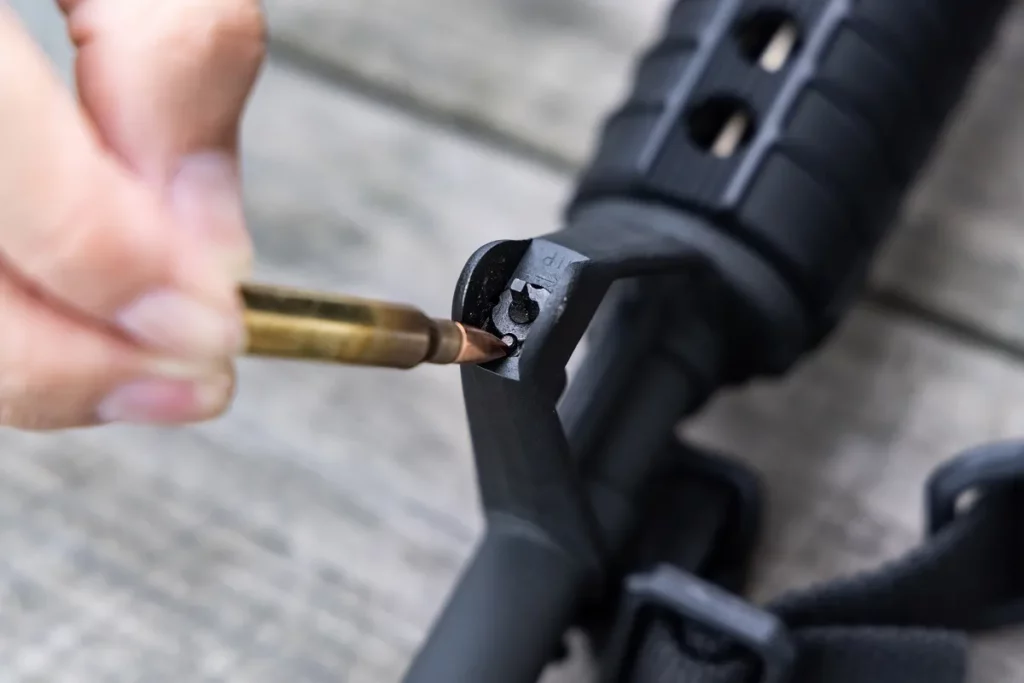
Wrap Up
While zeroing iron sights can be daunting, it’s really a simple task once you know how it’s done. Still, there are a lot of different models of sights on the market, many of which have unusual or proprietary adjustment methods.
Should you have any questions about how to adjust your particular sight, feel free to give us a call at 713-344-9600 or reach out via email at info@primaryarms.com. Our team of experts is always happy to help!


